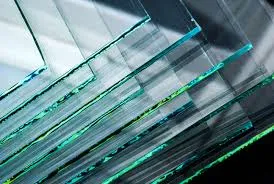The Reflective World of Flat Glass Mirrors
Flat glass mirrors have become an integral part of our daily lives, serving both functional and aesthetic purposes. From the humble bathroom mirror to decorative wall art, these reflective surfaces not only enhance our spaces but also influence our perceptions and behaviors. The journey of flat glass mirrors, their production, and their cultural significance presents an interesting narrative worth exploring.
What are Flat Glass Mirrors?
Flat glass mirrors are made by coating a piece of flat glass with a reflective material, typically silver or aluminum. The process involves cleaning the glass thoroughly to remove any impurities and then applying a thin layer of metal, followed by a protective coating to prevent tarnishing. This method of manufacture ensures that the reflection is both clear and true, making flat glass mirrors ideal for personal grooming, home decor, and even artistic expression.
The Historical Journey
The history of mirrors dates back thousands of years. The earliest mirrors were made from polished stone or metal, and they primarily served the elite. It wasn’t until the development of glass-making techniques in the Middle Ages that flat mirrors became widely accessible. By the 16th century, Venetian artisans perfected the art of mirror-making and began producing high-quality glass mirrors that were coveted across Europe.
As the industrial revolution took hold in the 19th century, the manufacturing of flat glass mirrors saw significant advancements. Mass production techniques allowed mirrors to become more affordable and available to the average household. This democratization of mirrors changed how people viewed themselves and their spaces, making personal grooming and self-examination commonplace.
Aesthetic and Functional Roles
flat glass mirror
Today, flat glass mirrors serve a multitude of functions. They are essential in bathrooms, dressing rooms, and salons for personal grooming. However, their roles extend beyond practicality. Mirrors can make spaces appear larger and brighter, reflecting light and creating an illusion of depth. Interior designers often use mirrors to enhance the aesthetic appeal of a room, strategically placing them to elevate the overall ambiance.
Moreover, mirrors are not only functional but also artistic. Many artists incorporate flat glass mirrors into their work, creating pieces that challenge perceptions and encourage reflection—both literally and metaphorically. In contemporary art, mirrors are often used to engage viewers, making them part of the artwork and prompting self-reflection and introspection.
Cultural Significance
Culturally, flat glass mirrors hold a unique place in many societies. They are often imbued with symbolic meanings, representing vanity, self-awareness, and even the soul. In folklore, mirrors are frequently associated with themes of truth and deception, acting as portals to other realms or reflecting one’s true nature. Many cultures also view mirrors as protective objects, believed to ward off negative energies or evil spirits.
In modern life, the presence of mirrors is pervasive, and their impact on self-image cannot be overstated. Social media has amplified the focus on appearances, with mirrors becoming tools for creating curated images and identities. This phenomenon raises questions about the nature of perception and the influence of widely held beauty standards on individual self-worth.
The Future of Flat Glass Mirrors
As technology advances, the future of flat glass mirrors is becoming increasingly sophisticated. Smart mirrors equipped with digital displays allow users to access information such as weather updates, news, and even health stats while looking in the mirror. These innovations blend functionality with modern design, promising to transform how we interact with reflective surfaces.
In conclusion, flat glass mirrors are far more than simple reflective surfaces. They possess a rich history, serve various aesthetic and functional roles, and hold profound cultural significance. As we continue to innovate and integrate technology into our lives, the humble mirror will likely evolve, reflecting not only our physical appearances but also the changing identities and values of society.
 Afrikaans
Afrikaans  Albanian
Albanian  Amharic
Amharic  Arabic
Arabic  Armenian
Armenian  Azerbaijani
Azerbaijani  Basque
Basque  Belarusian
Belarusian  Bengali
Bengali  Bosnian
Bosnian  Bulgarian
Bulgarian  Catalan
Catalan  Cebuano
Cebuano  Corsican
Corsican  Croatian
Croatian  Czech
Czech  Danish
Danish  Dutch
Dutch  English
English  Esperanto
Esperanto  Estonian
Estonian  Finnish
Finnish  French
French  Frisian
Frisian  Galician
Galician  Georgian
Georgian  German
German  Greek
Greek  Gujarati
Gujarati  Haitian Creole
Haitian Creole  hausa
hausa  hawaiian
hawaiian  Hebrew
Hebrew  Hindi
Hindi  Miao
Miao  Hungarian
Hungarian  Icelandic
Icelandic  igbo
igbo  Indonesian
Indonesian  irish
irish  Italian
Italian  Japanese
Japanese  Javanese
Javanese  Kannada
Kannada  kazakh
kazakh  Khmer
Khmer  Rwandese
Rwandese  Korean
Korean  Kurdish
Kurdish  Kyrgyz
Kyrgyz  Lao
Lao  Latin
Latin  Latvian
Latvian  Lithuanian
Lithuanian  Luxembourgish
Luxembourgish  Macedonian
Macedonian  Malgashi
Malgashi  Malay
Malay  Malayalam
Malayalam  Maltese
Maltese  Maori
Maori  Marathi
Marathi  Mongolian
Mongolian  Myanmar
Myanmar  Nepali
Nepali  Norwegian
Norwegian  Norwegian
Norwegian  Occitan
Occitan  Pashto
Pashto  Persian
Persian  Polish
Polish  Portuguese
Portuguese  Punjabi
Punjabi  Romanian
Romanian  Russian
Russian  Samoan
Samoan  Scottish Gaelic
Scottish Gaelic  Serbian
Serbian  Sesotho
Sesotho  Shona
Shona  Sindhi
Sindhi  Sinhala
Sinhala  Slovak
Slovak  Slovenian
Slovenian  Somali
Somali  Spanish
Spanish  Sundanese
Sundanese  Swahili
Swahili  Swedish
Swedish  Tagalog
Tagalog  Tajik
Tajik  Tamil
Tamil  Tatar
Tatar  Telugu
Telugu  Thai
Thai  Turkish
Turkish  Turkmen
Turkmen  Ukrainian
Ukrainian  Urdu
Urdu  Uighur
Uighur  Uzbek
Uzbek  Vietnamese
Vietnamese  Welsh
Welsh  Bantu
Bantu  Yiddish
Yiddish  Yoruba
Yoruba  Zulu
Zulu 

